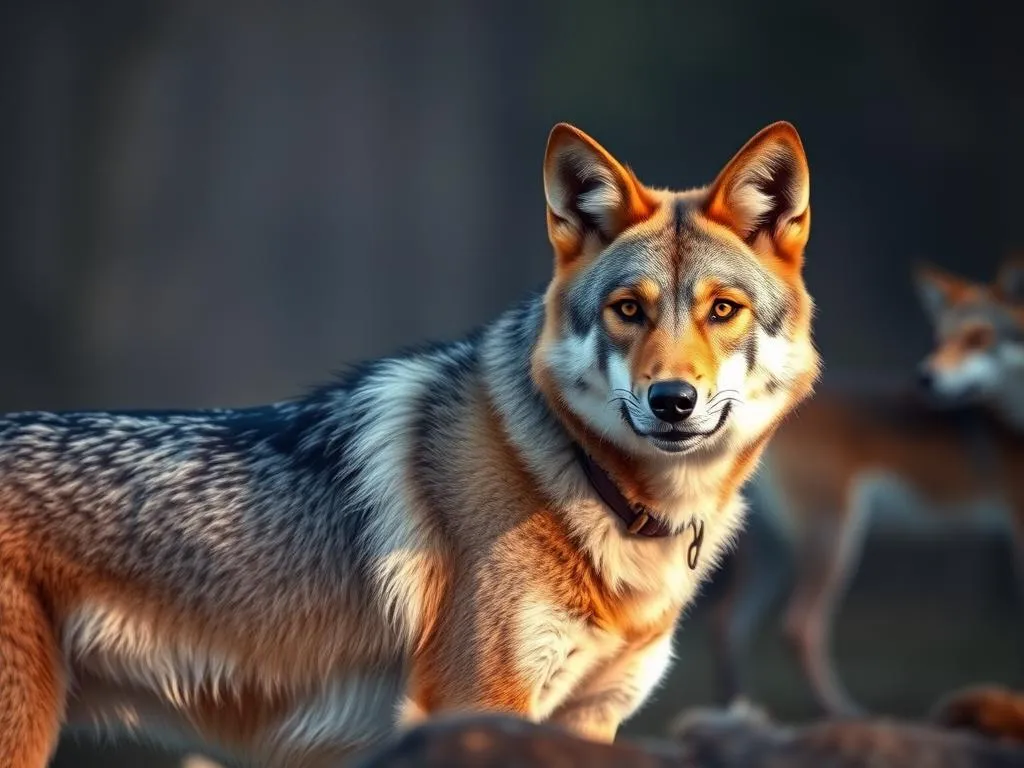
Coyotes and dogs are often subjects of curiosity and confusion. While they belong to the same family, the Canidae, the question remains: is a coyote a type of dog? To answer this, we need to delve into the fascinating world of canids, exploring their classifications, characteristics, and the myths surrounding them.
Understanding Canids
What are Canids?
The Canidae family, commonly known as canids, encompasses a variety of species, including wolves, foxes, domestic dogs, and coyotes. These animals are characterized by their elongated snouts, sharp teeth, and a keen sense of smell. The family Canidae is divided into several genera, with the most notable being Canis, which includes domestic dogs (Canis lupus familiaris) and coyotes (Canis latrans), among others.
Characteristics of Canids
Canids share several physical and behavioral traits, which help define their role in the ecosystem:
-
Physical Traits: Canids typically have long legs, pointed ears, and bushy tails. Their fur can vary significantly in color and texture, adapted to their specific environments.
-
Behavioral Traits: Many canids are known for their intelligence and adaptability. They often exhibit social behaviors, with some species, like wolves and domestic dogs, forming packs or social groups.
-
Social Structures: Canids can be solitary or social. For example, wolves are known for their complex pack dynamics, whereas coyotes may hunt alone or in pairs.
The Taxonomy of Coyotes and Dogs
Classification of Dogs
Domestic dogs fall under the sub-species Canis lupus familiaris, which indicates their descent from wolves. The domestication of dogs is believed to have begun over 15,000 years ago, with a variety of breeds emerging to serve different purposes, from herding to companionship.
Classification of Coyotes
Coyotes are scientifically classified as Canis latrans. They are native to North America and have adapted to various habitats, including deserts, forests, and urban areas. Unlike domestic dogs, coyotes are more versatile in their hunting strategies and can thrive in diverse environments.
Genetic Relationship
Both coyotes and dogs share a genetic lineage, indicating a common ancestry. Recent studies have shown that domestic dogs and coyotes have about 98.8% of their DNA in common. This genetic relationship sheds light on the evolutionary history of both species, with coyotes representing a more wild counterpart to the domesticated dog.
Physical and Behavioral Differences
Physical Differences
When considering whether a coyote is a type of dog, it’s essential to look at their physical differences:
-
Size and Weight Comparisons: Coyotes are generally smaller than most domestic dog breeds, weighing between 24 to 46 pounds, while dogs can range from tiny Chihuahuas to massive Great Danes.
-
Fur Coloration and Texture: Coyotes typically have a mix of gray, brown, and black fur, often with a lighter underbelly. Domestic dogs exhibit a wider variety of colors and patterns due to selective breeding.
-
Anatomical Differences: Coyotes have longer legs and a more slender body compared to many domestic dogs, which often have stockier builds.
Behavioral Differences
Behaviorally, coyotes and dogs display distinct traits:
-
Social Behavior and Pack Dynamics: While domestic dogs often rely on humans for companionship and structure, coyotes display more independence. They can form small family groups but are more likely to hunt alone or in pairs.
-
Hunting and Feeding Habits: Coyotes are opportunistic feeders, hunting small mammals, birds, and even scavenging when necessary. In contrast, domestic dogs rely on human-provided food and do not exhibit the same hunting instincts.
-
Interaction with Humans: Domestic dogs are bred for companionship and are generally more sociable with humans. Coyotes, on the other hand, are often wary of people and prefer to avoid human interaction.
Common Myths and Misconceptions
Are Coyotes Dangerous?
One prevalent myth is that coyotes are inherently aggressive towards humans. In reality, coyotes are usually shy and avoid human contact. Reports of coyote attacks on humans are rare and typically occur when the animals feel threatened or cornered. Understanding their behavior can help dispel fears and promote coexistence.
Coyotes as Pets
Another common misconception is that coyotes can be kept as pets. While some people may attempt to domesticate a coyote, it is essential to consider the legalities and ethical implications. Unlike domestic dogs, coyotes have strong survival instincts and complex social needs, making them unsuitable as household pets. Moreover, many regions have strict laws prohibiting the ownership of coyotes as pets.
Ecological Role of Coyotes
Coyotes in Ecosystems
Coyotes play a vital role in maintaining ecological balance. As apex predators, they help regulate populations of small mammals, such as rodents, which can otherwise become overpopulated. Their hunting habits contribute to the health of ecosystems, ensuring a balance between predator and prey.
Coyotes and Urban Environments
Interestingly, coyotes have adapted remarkably well to urban settings. They have learned to navigate human environments, often seeking food in parks and residential areas. This adaptability raises important questions about human-wildlife interactions and how we can coexist with these intelligent creatures. Strategies such as securing trash and avoiding feeding wildlife can help reduce conflicts.
Conclusion
In conclusion, while coyotes and dogs share a common ancestry and belong to the same family, they are distinct species with unique characteristics and behaviors. Is a coyote a type of dog? The answer is no; coyotes are not a type of dog, but rather a wild counterpart with fascinating adaptations. By understanding the differences between these two canids, we can foster a better relationship with wildlife, promoting coexistence and respect for nature.
Understanding the complex dynamics between humans and coyotes can enrich our appreciation of the natural world. Whether observing them in the wild or learning about their ecological roles, it’s crucial to respect their space and understand their significance in our ecosystems.









